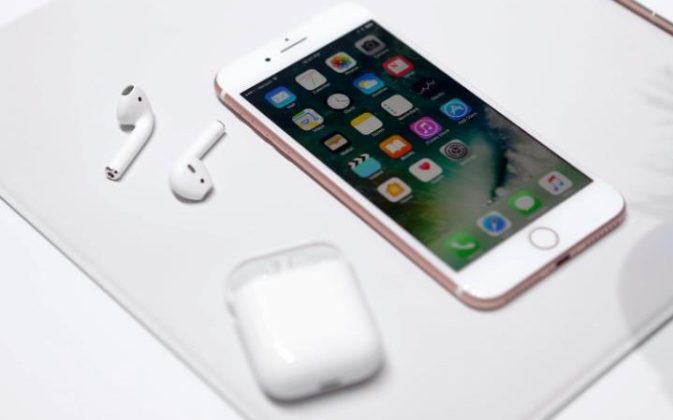
Apple announced its next generation of the iPhone – the iPhone 7 and iPhone 7 Plus at its annual press event on Wednesday 7th September 2016 in San Francisco.
At a launch event yesterday night, the company revealed an upgraded iPhone that, while aesthetically similar to the iPhone 6s and 6s Plus, has several big differences, including a pressure-sensitive home button, better camera, a faster processor and improved battery life, as well as having no headphone jack.
It also comes in a new range of colours and a starting size of 32GB.
What are the new features?

The most significant changes on the new phone include an upgraded camera, a new home button and the removal of the 3.5mm headphone jack.
Instead of the traditional headphone connection, iPhone packages will now come with earphones that fit into the phone’s Lightning port, currently used for charging and data transfer.
The bigger “Plus” model has an even-more powerful “dual-lens” camera, explained below.
Killing the headphone jack
One of the most controversial decisions has been to remove the headphone jack, instead shipping the phone with a pair of Lightning EarPods – which connect through the charging port – and wireless Apple AirPods, powered by a W1 chip.
Infared sensors detect when each pod is in your ear and motion sensors control the headphones to use Siri and detect your voice.
iPhone 7 pricing
In the UK, Apple said the iPhone 7 will be available from a starting price of £599 for the cheapest 32GB option.
The 128GB version is £699 and the 256GB version will set you back a whopping £799.
Lets convert With todays current exchange rate of £1 = 543
£799 = N433k
iPhone 7 Plus pricing
The larger iPhone 7 Plus will be even more of a wallet buster than it’s smaller sibling.
The cheapest (32GB) iPhone 7 Plus costs £719, followed by a 128GB model at£819, and then a 256GB variant costing an astonishing £919.